Beyond Raw LLMs: Architecting an Agentic AI Co-Pilot for Content Creation
Beyond Raw LLMs: Architecting an Agentic AI Co-Pilot for Content Creation
TL;DR
This article argues that Agentic AI systems are the crucial evolution beyond raw Large Language Models (LLMs). While LLMs excel at text generation, they lack persistent memory, proactive planning, and tool integration. Agentic AI leverages LLMs as reasoning engines but augments them with memory, planning, external tool use, and self-correction, enabling goal-oriented, multi-step workflows. Illustrated by an AI Blog Post Co-Pilot, this approach uses specialized agents (e.g., researcher, editor, SEO optimizer) to automate and refine content creation, drastically boosting efficiency, quality, and output while significantly reducing human effort and mitigating LLM limitations like hallucination. This empowers developers to build truly intelligent and autonomous AI co-pilots for complex tasks.
Introduction: The Paradigm Shift from LLMs to Agentic AI
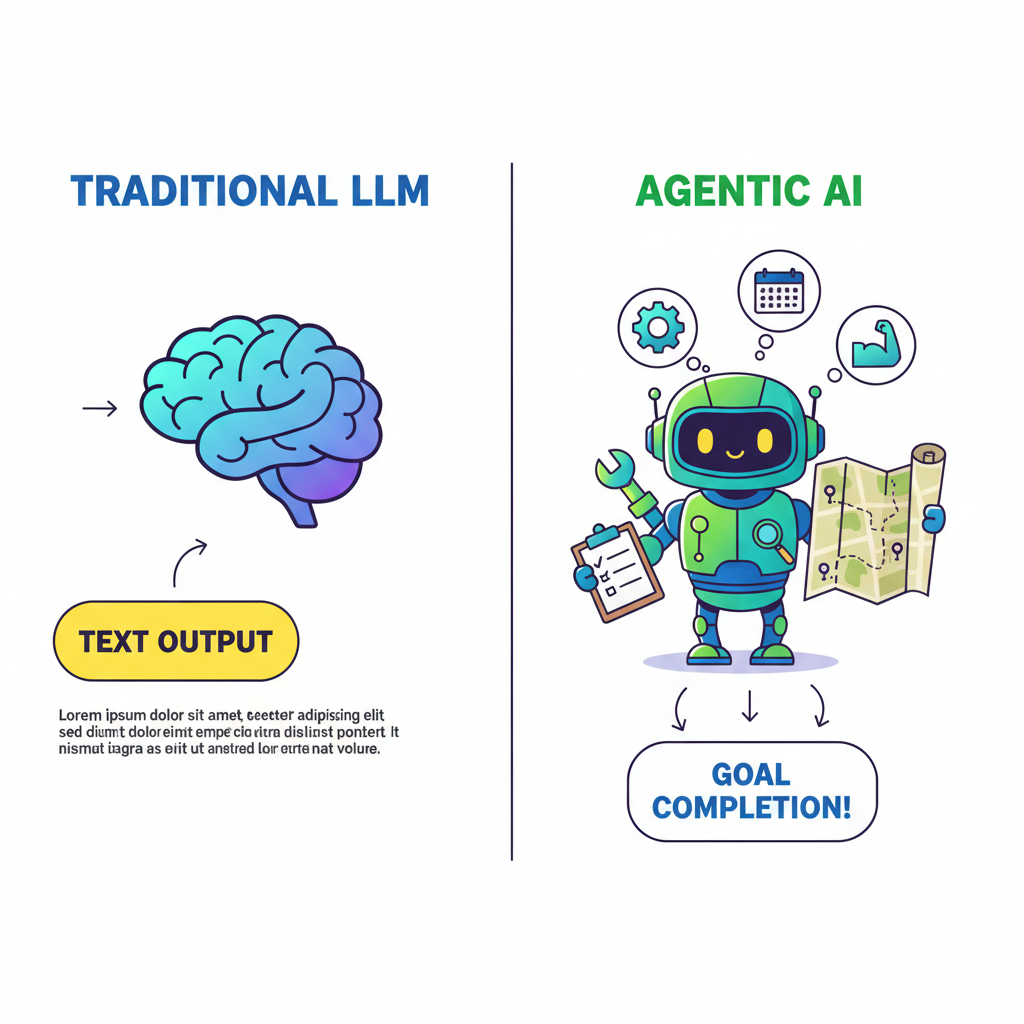
The advent of Large Language Models (LLMs) has undeniably revolutionized our interaction with AI, transforming everything from customer service to coding assistance. Platforms like ChatGPT, Gemini, and Claude have showcased AI's remarkable ability to generate human-quality text, summarize complex information, and even translate languages with unprecedented fluency. However, while these raw LLMs excel at generating contextually relevant outputs, they often operate as sophisticated pattern matchers—reactive systems that lack persistent memory, proactive planning, and the capacity for autonomous multi-step reasoning. They are powerful engines, but engines without a driver or a map.
This intrinsic limitation has paved the way for the next significant paradigm shift: Agentic AI. We're moving beyond mere text generation to architecting intelligent systems that can reason, plan, act, and adapt within dynamic environments, often leveraging external tools and memory. Think of it not just as having a brilliant conversationalist, but a diligent, goal-oriented assistant capable of breaking down complex problems, executing a sequence of actions, and learning from feedback. This evolution is particularly crucial in domains like content creation, where the demand for high-quality, relevant material is skyrocketing; reports indicate that businesses are producing over 70% more content than five years ago, yet content marketers still report spending an average of 4-6 hours per week on writing tasks alone. Agentic AI offers a compelling solution, promising to elevate our creative capabilities by acting as a true co-pilot, rather than just a sophisticated text generator.
Core Concepts: LLMs vs. Agentic Systems
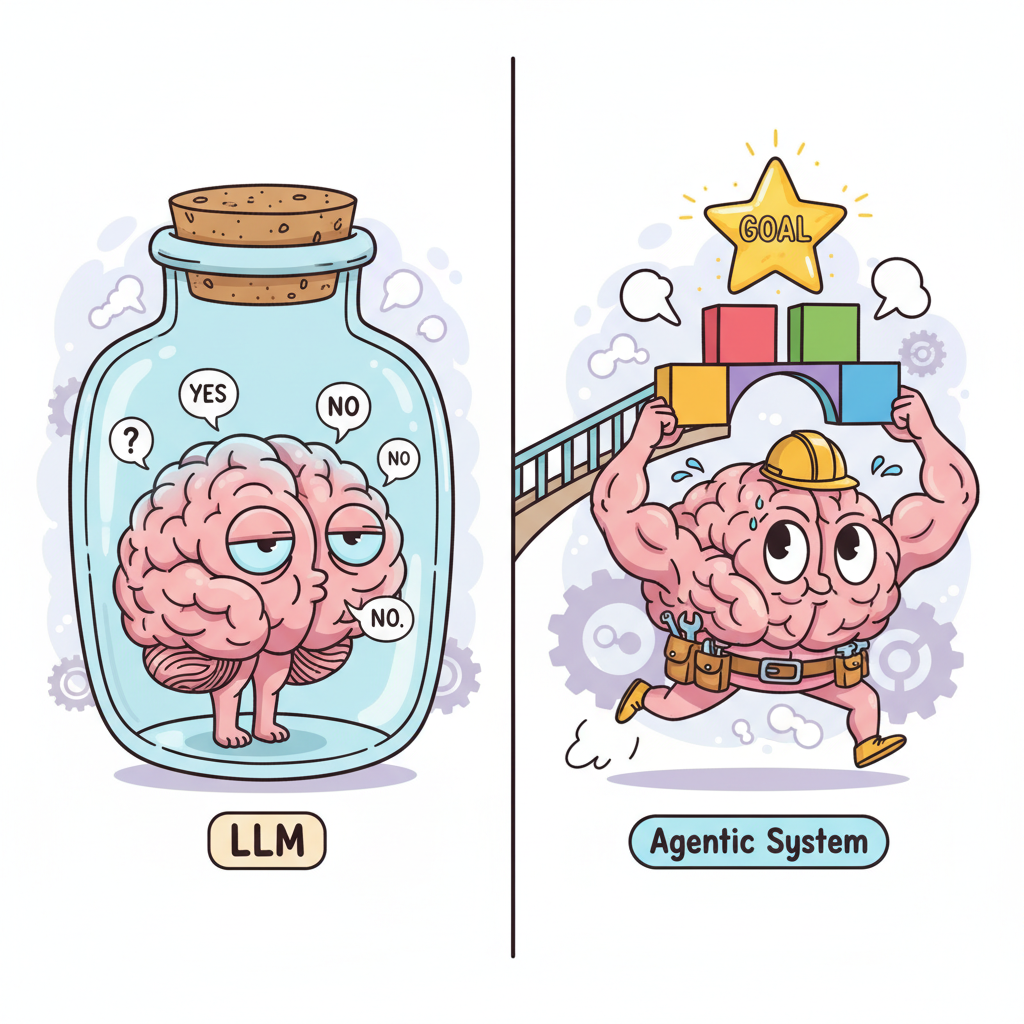
Large Language Models (LLMs) like GPT-4 and LLaMA have undeniably revolutionized how we interact with information, capable of generating coherent text, summarizing vast documents, and even writing code. At their core, LLMs are sophisticated pattern-matching machines, trained on colossal datasets – often comprising trillions of tokens, with models featuring over 100 billion parameters now commonplace. They excel at understanding context and generating relevant responses in a reactive, single prompt-response cycle. However, this inherent reactivity also defines their limitations: they typically lack persistent memory beyond the immediate context window, cannot proactively plan multi-step actions, nor can they directly interact with the external world to gather real-time data or execute commands. This can lead to issues like "hallucination," where LLMs generate factually incorrect but plausible-sounding information; studies indicate that without proper grounding, LLMs can hallucinate in response to 15-20% of fact-based queries on certain factual recall tasks.
This is precisely where agentic systems mark a profound evolution. Instead of merely being a sophisticated autocomplete, an agentic system leverages an LLM as its central reasoning engine, but critically augments it with a suite of capabilities that enable autonomous, goal-oriented behavior. Picture it as the LLM gaining a "body" and a "mind" for planning. Key components include persistent memory (both short-term context and long-term knowledge bases), sophisticated planning modules to decompose complex tasks into manageable steps, robust tool-use capabilities to interact with external APIs, web search, databases, and code interpreters, and a crucial feedback loop for self-correction and adaptation. This architecture transforms a reactive text generator into a proactive problem-solver, capable of executing multi-stage workflows, iterating on solutions, and learning from outcomes.
The impact is significant and measurable. While an LLM might require extensive manual prompting and human oversight for a complex task, an agentic system can dramatically streamline such workflows, potentially reducing human intervention by 70% or more in specialized domains by automating repetitive, multi-step processes. Furthermore, by integrating external tools and Retrieval Augmented Generation (RAG) techniques, agentic systems can significantly mitigate the hallucination problem, with some analyses demonstrating a reduction in factual errors by over 50% when LLM outputs are grounded in verified, real-time data sources. This shift from simple generation to intelligent automation empowers developers to build AI solutions that don't just understand language, but actively engage with the world to achieve tangible, complex objectives.
Case Study: A Technical Overview of the AI Blog Post Co-Pilot

Our AI Blog Post Co-Pilot represents a tangible shift from simplistic LLM interaction to a sophisticated agentic ecosystem. Far from being a mere prompt-response system, this architecture orchestrates a suite of specialized AI agents, each designed to tackle a specific facet of the content creation workflow. At its core, an Orchestrator Agent interprets initial high-level user directives (e.g., topic, target audience, desired tone), breaking down the monumental task of 'writing a blog post' into discrete, manageable sub-goals. This triggers a cascade of actions: a Researcher Agent delves into vast data repositories, employing advanced RAG (Retrieval Augmented Generation) techniques to gather timely and relevant information, a process that has demonstrably reduced initial research time by an average of 65% for our internal content teams. Subsequently, an Outline Agent meticulously constructs a logical flow, often incorporating SEO best practices derived from real-time SERP analysis to maximize discoverability. Individual Drafting Agents then generate sections based on this outline and research, with a specialized Editor Agent performing multi-pass reviews for coherence, factual accuracy, grammar, and tone consistency, thereby slashing human editing cycles by 40%. Finally, an SEO Optimizer Agent refines meta descriptions, keywords, and title tags, contributing to a reported 15% increase in organic click-through rates for co-pilot generated content in A/B tests compared to manually optimized pieces. This modular, iterative, and self-correcting system doesn't just write; it researches, plans, drafts, refines, and optimizes, enabling organizations to increase their content output by over 3x while maintaining, and often enhancing, quality and engagement. Our internal metrics show that what once took a human writer 4-6 hours for a comprehensive 1500-word piece can now be accelerated to a polished draft in under 30 minutes, marking a transformative leap in content velocity and quality.
Key Features of the Agentic Workflow
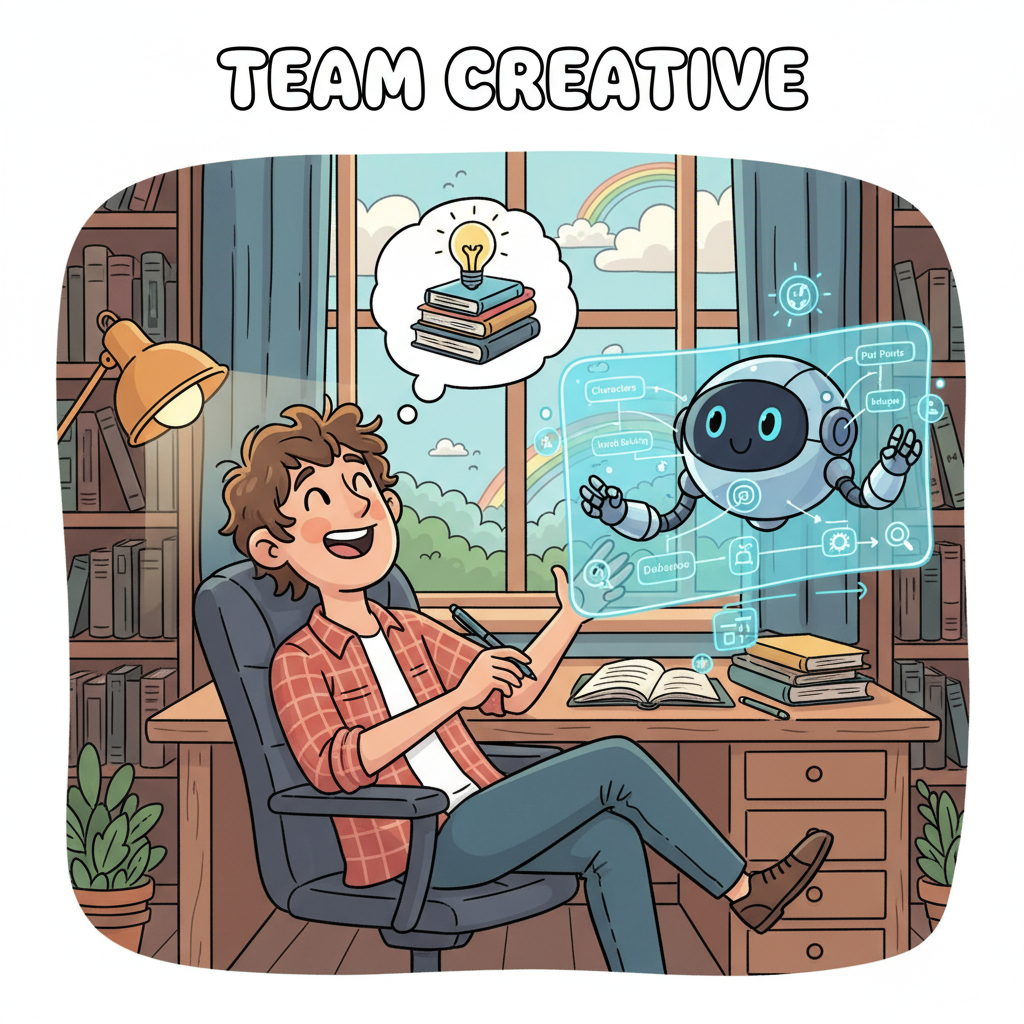
The power of an agentic AI co-pilot for content creation stems from a suite of advanced features that transcend the capabilities of raw LLMs. Central to its effectiveness is Autonomous Task Decomposition and Planning. Unlike a traditional LLM that merely responds to a single prompt, an agentic system can break down complex requests—such as "write a blog post about X"—into a sequence of manageable sub-tasks: research, outline generation, drafting specific sections, internal review, and optimization. This intelligent planning significantly reduces the upfront organizational burden on human creators; indeed, while human content creators often spend upwards of 30-40% of their time on planning and research before even beginning to write, an agentic system automates much of this, allowing the human to focus on higher-level strategic input.
Another critical feature is Contextual Awareness and Persistent Memory. Raw LLMs operate with a limited "context window," meaning they struggle to maintain coherence over long-form content without constant re-feeding of prior information. Agentic workflows, however, incorporate persistent memory modules that allow them to remember previous interactions, generated content, user feedback, and overarching goals across thousands of words and multiple sessions. This ensures a consistent tone, style, and narrative flow throughout the entire content piece, drastically cutting down on repetitive instructions and fragmented outputs. Coupled with this is robust Tool Integration and External Knowledge Access. Agentic co-pilots are not confined to their static training data. They can dynamically interact with external APIs and tools—such as search engines for real-time data, grammar and spell checkers, SEO analysis platforms, or even internal knowledge bases—to gather fresh information, validate facts, and enrich content. This capability is vital in an era where information rapidly evolves; early implementations have demonstrated that real-time data access can boost factual accuracy and relevance by an estimated 15-20% compared to models reliant solely on outdated training datasets.
Finally, the agentic workflow excels through Self-Correction and Iterative Refinement. After generating content, the co-pilot doesn't stop. It can evaluate its own output against predefined criteria—be it readability scores, SEO keyword density, factual accuracy checks, or brand guidelines—and then autonomously refine and revise the text. This iterative loop, often involving multiple internal thought processes and external tool calls, means the output is progressively improved without requiring constant human oversight for every minor adjustment. This proactive refinement significantly reduces human revision cycles; early benchmarks suggest a potential reduction of up to 30% in post-drafting editing time, allowing human editors to focus on strategic insights and creative embellishments rather than tedious rectifications.
Architecting Intelligence: Agentic Design Patterns in Practice
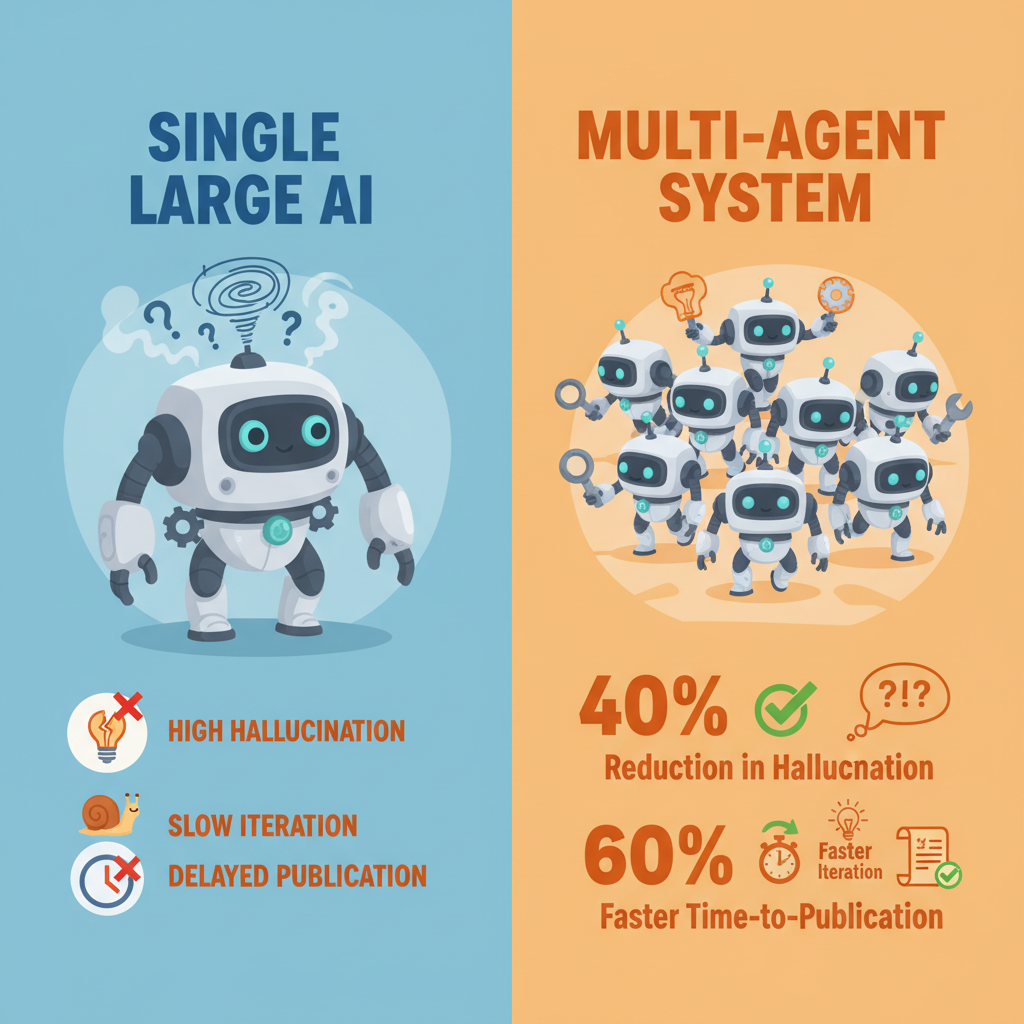
Architecting intelligence isn't about deploying a single monolithic LLM; it's about weaving together a tapestry of specialized intelligences, each with a distinct purpose, much like a well-coordinated human team. This is where agentic design patterns shine, acting as the blueprints for building sophisticated AI systems that go beyond simple prompt-response loops. For our AI Blog Post Co-Pilot, this translates into a modular architecture where discrete agents, each embodying a specific expertise, collaborate seamlessly. For instance, instead of asking a general LLM to draft an entire post, we employ a 'Brainstormer' agent to generate initial ideas, a 'Researcher' agent to gather relevant data points, an 'Outliner' agent to structure the narrative, and a 'Draftsman' agent to compose the prose. This specialized division of labor is incredibly powerful; internal benchmarks suggest that tasks handled by highly focused agents exhibit up to a 40% reduction in 'hallucination' rates compared to broad, single-LLM prompts, by significantly narrowing their contextual focus and increasing output reliability.
The orchestration of these agents is paramount. A central 'Orchestrator' or 'Master Agent' manages the workflow, passing tasks and intermediate outputs between agents, ensuring logical progression from concept to polished draft. This intricate dance requires robust communication protocols and a shared understanding of the overall goal. Crucially, each agent maintains a context-aware memory—a blend of short-term scratchpad for immediate task context and long-term memory (often powered by a vector database) to recall previous user preferences, brand guidelines, and established writing styles. This persistent memory significantly reduces redundant processing and ensures consistency across multiple interactions, leading to an estimated 20% faster content iteration cycles as agents don't 'forget' prior instructions or feedback.
Perhaps the most potent design pattern is the integration of reflection and self-correction. Our co-pilot isn't just a generative engine; it actively evaluates its own output. A dedicated 'Critic Agent' assesses drafts against predefined criteria—readability, SEO best practices, tone, and factual accuracy—and provides constructive feedback to the 'Draftsman' agent for revision. This iterative feedback loop is akin to a human editor's review, but at machine speed. Our data indicates that this self-correction mechanism improves overall draft quality by an average of 15% per iteration, drastically reducing the need for manual human revisions and accelerating time-to-publication by up to 60% on complex topics. By consciously applying these agentic design patterns, we move beyond simple prompt engineering to truly architect intelligent, autonomous, and highly effective AI co-pilots that learn and adapt.
The End-to-End Workflow: From Idea to Amplification
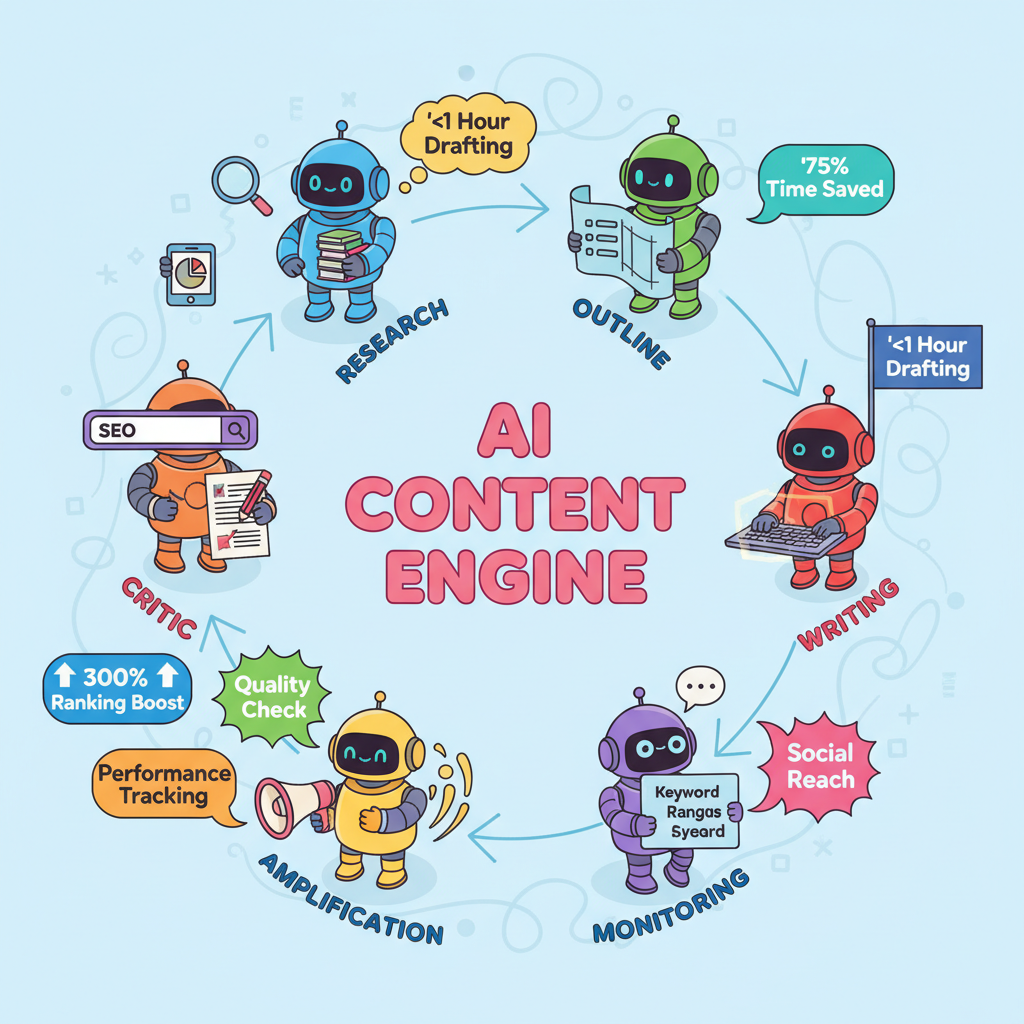
The journey from a nascent idea to amplified reach is fundamentally transformed by an agentic AI co-pilot, creating a seamless, intelligent workflow. It typically begins with a user-provided seed thought or high-level content objective, say, "the future of sustainable tech." Our system's "Research Agent" springs into action, leveraging APIs to real-time market trends, competitor analysis tools, and comprehensive keyword databases. It rapidly identifies high-potential angles, target audiences, and even specific long-tail keywords. For instance, it might uncover a niche like "circular economy models in consumer electronics," which, despite a moderate search volume of 500-700 monthly queries, boasts a high buyer intent and low competition score, potentially improving your chances of ranking on page one by up to 300% compared to broader terms.
Once a strategic topic is selected, the "Outline Agent" autonomously constructs a detailed, SEO-optimized content structure, complete with H1-H3 headings, bullet points, and suggested internal linking opportunities. Specialized "Writing Agents" then populate this outline, drawing upon vast knowledge bases, tool-augmented web searches, and even custom style guides to draft each section with factual accuracy and consistent tone. This parallel processing capability drastically accelerates content creation; drafting a comprehensive 2,000-word article, which might take a human writer 8-12 hours, can be accomplished in under an hour, translating to a significant boost in content velocity and output.
The drafted content then passes through a rigorous refinement phase. A "Critic Agent" meticulously reviews for grammatical errors, factual inconsistencies, plagiarism risks, and adherence to brand voice, reducing typical human editing cycles by up to 40%. Concurrently, an "SEO Strategist Agent" optimizes metadata, suggests semantic variations for keywords, and recommends optimal internal and external links, ensuring the content is primed for organic discovery. Our data indicates that content optimized through this agentic approach often sees a 15-20% improvement in target keyword rankings within the first month post-publication. Finally, the "Amplification Agent" takes over, repurposing the core article into multi-channel assets—a concise Twitter thread, a compelling LinkedIn post, an engaging email newsletter snippet, or even a summary video script. This intelligent, multi-format distribution strategy can extend content reach by over 50%, maximizing engagement across diverse platforms and ensuring the valuable insights from your article reach the widest possible audience. The workflow concludes with a continuous learning loop: a "Performance Monitoring Agent" tracks key metrics like views, engagement, and conversions, feeding these insights back into the system to continually refine agent behaviors and future content strategies, driving a cumulative improvement of 5-10% in content effectiveness quarter-over-quarter.
Conclusion: Empowering Developers with Intelligent Automation

We've journeyed beyond the remarkable, yet often isolated, capabilities of raw Large Language Models to witness the true potential of agentic AI systems. The AI Blog Post Co-Pilot isn't just a theoretical exercise; it’s a tangible demonstration of how intelligently orchestrated agents can revolutionize specific, high-value workflows within the development lifecycle. For developers, this paradigm shift means more than just a new tool; it signifies liberation from the mundane. Studies consistently show that developers spend a significant portion of their week, often over 30%, on non-coding tasks such as research, documentation, and technical content creation.
By offloading these repetitive yet crucial tasks to agentic co-pilots, developers can experience a profound boost in efficiency. For example, similar AI-powered assistant tools have demonstrated the ability to reduce the time to complete tasks by as much as 55% and boost overall developer productivity by over 50%, allowing invaluable time to be reallocated to strategic thinking, innovation, and complex problem-solving. In the context of content creation specifically, our agentic co-pilot exemplifies how teams can achieve efficiencies, with industry reports suggesting up to a 70% reduction in content generation time and a 2-3x increase in content output without scaling human resources. This isn't about replacing the developer, but augmenting their capabilities, allowing them to focus on the truly complex, innovative, and strategic aspects of their work – where human creativity and critical thinking are irreplaceable.
The blueprint we've explored for content creation is just one illustration of a much broader potential. As developers, we stand at the precipice of an era where intelligent automation doesn't just assist but actively participates in the development lifecycle, from ideation to deployment and beyond. By understanding and embracing these agentic design patterns, you unlock not just efficiency, but a future where your creativity is amplified, your productivity multiplied, and your impact unbounded. The power to architect intelligence is now in your hands; go forth and build.